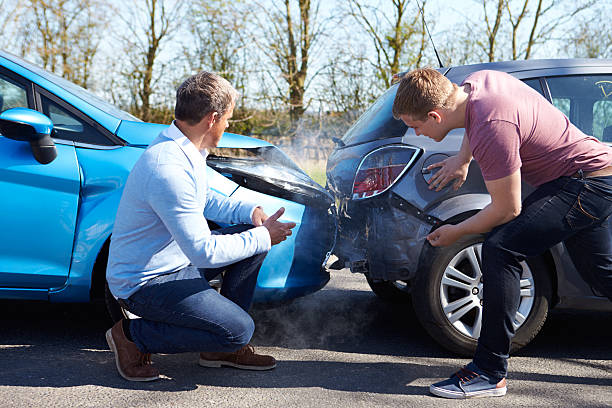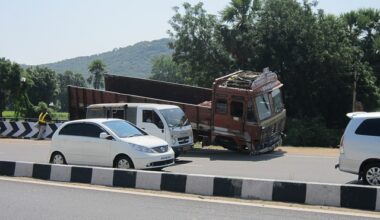Being found guilty of DUI (driving under the influence) can have serious repercussions for both your legal record and your auto insurance premiums. Your insurance rates will probably go up after a DUI, and you might have trouble getting coverage at a reasonable price. This post will explain everything on Car Insurance After a DUI and offer advice on how to handle the problem.
DUI’s Impact on Car Insurance
Insurance companies view a Car Insurance After a DUI conviction as a serious offence and high-risk behavior. Insurance companies will therefore probably raise your premiums significantly. Your insurance premiums may more than double, and in certain situations, you may even risk having your policy cancelled or not renewed.
SR-22 Insurance Filing
You might have to submit an SR-22 form to the Department of Motor Vehicles in your state following Car Insurance After a DUI. This certificate attests to the fact that you possess the bare minimum of liability insurance coverage. It’s sometimes called “high-risk insurance,” and not all insurance providers offer it.
Shopping for New Insurance
Car Insurance After a DUI conviction, your current insurance provider may drastically increase your premiums, so it’s critical to compare quotes for new coverage. Some insurers specialize in high-risk drivers, so even if your alternatives might be limited, they might still have more affordable rates. To locate the most economical coverage, get quotations from a few different companies.
Understand State Laws
The laws and rules pertaining to Car Insurance After a DUI convictions and auto insurance vary from state to state. Insurance prices may also be affected by the requirement for ignition interlock devices in some states for DUI offenders. Make sure you are aware of the particular regulations and rules applicable to your state.
Attending Defensive Driving or DUI Classes
Under certain circumstances, taking defensive driving or Car Insurance After a DUI education classes might lessen the effect a DUI has on your insurance. See if your insurance provider provides any savings or advantages for enrolling in these courses by contacting them.
Maintain Safe Driving Habits
It’s critical to create a record of safe driving Car Insurance After a DUI conviction. Steer clear of traffic infractions and collisions because such will drive up your insurance costs.
Compare Coverage Options
Car Insurance After a DUI, carefully assess what coverage you need from your insurance. Saving money on premiums is great, but you need also make sure you have enough insurance to safeguard other drivers and yourself while driving.
Financial Planning
Because insurance costs increase following a Car Insurance After a DUI, it’s critical to budget for these higher premiums. Make sure you have the financial means to fulfil the responsibilities attached to your insurance coverage.
What are some strategies to maintain a responsible driving record?
In addition to being beneficial to your safety, keeping up a clean driving record will lower your insurance costs. The following tactics will assist you in establishing and maintaining a safe driving record:
- Follow Traffic Laws: Respect all road laws, such as those pertaining to stop signs, speed limits, and traffic signals. Observe road signs and markers closely.
- Avoid Distractions: One of the main reasons for accidents is distracted driving. Keep your eyes on the road, put your phone aside, and refrain from eating or grooming while driving.
- Don’t Drink and Drive: Avoid drinking and driving. If you intend to drink, appoint a driver or find another way to get around.
- Obey Seat Belt Laws: Make sure every passenger in your car buckles up, and wear your seat belt at all times.
- Maintain a Safe Following Distance: Maintain a safe following distance between the car in front of you and your own. As a general guideline, keep a minimum three-second distance between anything.
- Adapt to Weather Conditions: Take the weather into account when driving. When it’s raining, snowing, or foggy, slow down and exercise additional caution.
- Stay Calm and Patient: Steer clear of hostile driving tendencies like road rage. Retain your calm and show other drivers patience.
- Use Turn Signals: When changing lanes or making a turn, use your turn signals to let other drivers know what you intend to do. This aids other motorists in anticipating what you will do.
- Check Your Blind Spots: Make sure to use your mirrors and look over your shoulder to check your blind areas before changing lanes.
- Regular Vehicle Maintenance: Maintaining your car on a regular basis will keep it in good operating order. This includes checking the tyres, brakes, and lights.
- Drive Defensively: Anticipate potential hazards and take proactive steps to avoid them. Keep an eye out for other drivers’ conduct and be ready to respond appropriately.
- Avoid Driving When Fatigued: Your decision-making and reaction time may be affected by fatigue. It is best to stop and relax if you are fatigued before continuing on your journey.
- Know the Rules of the Road: Stay informed about any modifications to the traffic rules and road regulations in your community.
- Avoid Aggressive Driving: Traffic infractions and accidents can result from aggressive driving practices such as weaving in and out of traffic, tailgating, and excessive speeding.
- Educate Yourself: To improve your driving abilities and understanding of safe driving procedures, think about enrolling in a defensive driving school or refresher course.
- Plan Your Routes: Plan your route and look for any probable traffic or road conditions that might affect your travel before you leave.
- Stay Sober: Never operate a vehicle while under the influence of drugs, alcohol, or any other substances that could make it unsafe for you to do so.
- Check for Recalls: Keep yourself updated on any recalls pertaining to your car. Verify that there are no recognized safety risks with your car.
- Report Unsafe Drivers: When it’s safe to do so, report any aggressive or dangerous drivers you see to the police.
- In the end, driving responsibly is about treating your responsibility as a driver seriously. It is your responsibility to ensure the safety of other drivers as well as your own and your passengers.
Car Insurance After a DUI: Defensive driving
A collection of safe driving methods and approaches known as “defensive driving” assist motorists in lowering their chance of collisions and driving responsibly and proactively. Defensive driving aims to improve road safety for the driver, passengers, and other road users by anticipating and responding to possible risks. Here’s more details on driving defensively:
Key Principles of Defensive Driving
Awareness
Drivers that practice defensive driving are acutely aware of their surroundings and keep a close eye on pedestrians, other cars and the road. They keep their attention on the road and stay away from distractions.
Anticipation
Careful drivers foresee possible hazards and are ready to respond swiftly to unforeseen circumstances. They observe what other drivers are doing and speculate about their potential behavior.
Safety Margin
To drive defensively, one must leave a safety margin. This entails giving yourself enough room to manoeuvre, maintaining a safe following distance behind the car in front, and being ready for unexpected stops.
Proactive Decision-Making
Proactive decision-making by defensive drivers is focused on safety rather than convenience. This includes choosing to slow down in inclement conditions or to yield the right of way even when it is theirs.
Risk Reduction
The goal of defensive driving is to lower risks. It entails abstaining from aggressive driving, following the law, and avoiding needless risk-taking.
Key Defensive Driving Techniques
Scan the Road
Keep your eyes on the road ahead, looking both up and down. Keep an eye out for any potential problems, such as cars leaving side streets or people preparing to cross.
Use Your Mirrors
Keep an eye on what’s going on back and behind you by often checking your side and rearview mirrors.
Maintain a Safe Following Distance
A useful rule of thumb is the 3-second rule. When the car in front of you passes a stationary object on the road, count “one thousand one, one thousand two, one thousand three.
Avoid Tailgating
It’s never appropriate to tailgate the car in front. To accommodate for unforeseen stops or emergencies, keep a safe distance.
Yield the Right of Way
Even if you theoretically have the right of way, you should always yield when it’s necessary. Accidents can be avoided by being cautious and courteous.
Use Turn Signals
To let other drivers know what you intend to do, use your turn signals. This lessens the chance of mishaps and confusion.
Adapt to Weather Conditions
In order to adapt your driving to the weather, slow down. Fog, rain, ice, and snow all call for increased care and slower driving.
Stay Sober
Never operate a vehicle while impaired by drugs, alcohol, or other substances that could compromise your safety.
Avoid Distractions
Remain focused on the wheel. Steer clear of distractions like texting, using the phone, and adjusting the radio.
Remain Calm
Steer clear of aggressive driving and road rage. Remain composed and patient, even in congested areas.
Benefits of Defensive Driving
- Reduced risk of accidents and injuries.
- Reduced insurance costs since many insurance providers give graduates of defensive driving courses a discount.
- Enhanced traffic flow since more cautious drivers often make for a more secure and predictable driving environment.
In summary
Finding inexpensive auto insurance and getting over a Car Insurance After a DUI conviction can be difficult, but they are not unachievable. It’s critical to comprehend how a DUI affects your insurance costs, consider your options, and keep a clean driving record. Your insurance costs may progressively go down as the DUI conviction gets further in the past. While you wait, evaluate estimates, think about the coverage you need, and take the required actions to resume driving safely and responsibly.





